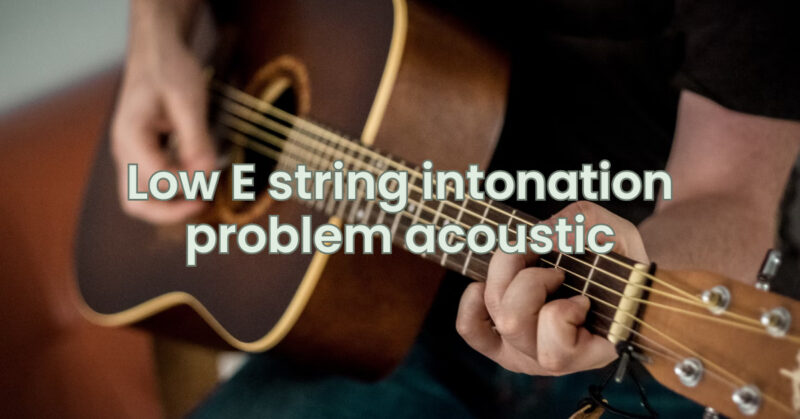Intonation problems can occur on any guitar, and when it specifically affects the low E string on your acoustic guitar, it can be frustrating and impact your playing experience. The low E string is vital to the overall tonal balance and harmony of your instrument. In this article, we will explore common causes of low E string intonation problems on acoustic guitars and provide potential solutions to help you address this issue and achieve optimal tuning.
Causes of Low E String Intonation Problems:
- Improper Nut Slot: The nut is the small, grooved piece located at the top of the guitar’s neck. If the nut slot for the low E string is too high or too low, it can affect the intonation by altering the string length between the nut and the first fret.
- Bridge Saddle Position: The bridge saddle is the component located on the bridge where the strings rest. If the saddle position for the low E string is incorrectly placed, it can affect the string length between the saddle and the guitar’s body, resulting in intonation issues.
- Uneven Fretting: Uneven or worn frets can cause the low E string to buzz or lose pitch accuracy, leading to intonation problems. Fret wear can occur over time, especially if you play frequently or use heavy-gauge strings.
Solutions to Low E String Intonation Problems:
- Nut Slot Adjustment: Inspect the nut slot for the low E string. If it appears too high or too low, it may require adjustment. If the slot is too high, carefully file it down using a nut file or take it to a professional guitar technician for precision adjustment. If the slot is too low, it’s best to replace the nut entirely to ensure proper intonation.
- Saddle Position Adjustment: Check the saddle position for the low E string. If it is too far forward or backward, it can affect the string length and cause intonation issues. Using a screwdriver or Allen wrench (depending on your guitar’s design), make small adjustments to the saddle position. Move it slightly towards the neck to lengthen the string length if the intonation is flat. Conversely, move it slightly towards the body to shorten the string length if the intonation is sharp.
- Fret Examination: Inspect the frets, particularly in the area where the low E string is played. Look for signs of wear, unevenness, or grooves. If you notice any issues, it’s recommended to have a professional guitar technician level, crown, and polish the frets to ensure a smooth playing surface and proper intonation.
- String Gauge Consideration: The gauge of your low E string can also impact intonation. If you’re using a particularly heavy or light gauge, it may be worth experimenting with different string sets to find the one that offers the best balance between tension and intonation accuracy.
Conclusion:
Dealing with low E string intonation problems on your acoustic guitar can be frustrating, but with the right understanding and adjustments, it can be resolved. By addressing potential causes such as nut slot adjustment, saddle position adjustment, fret examination, and string gauge consideration, you can significantly improve the accuracy of your low E string’s intonation. If you’re unsure about making adjustments, it’s always recommended to seek assistance from a professional guitar technician who can provide expert guidance and ensure your instrument is set up correctly. With the proper adjustments and attention to detail, you can enjoy playing in tune and achieve optimal intonation on your acoustic guitar.


